Science, Séance and Red Herring:
Reflections on a life in microbial science II
Easing into Public Service in Scientific Research
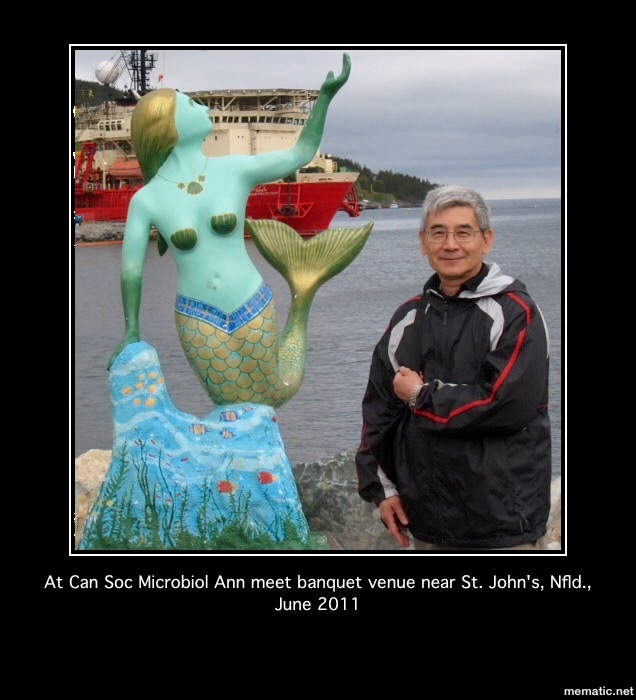
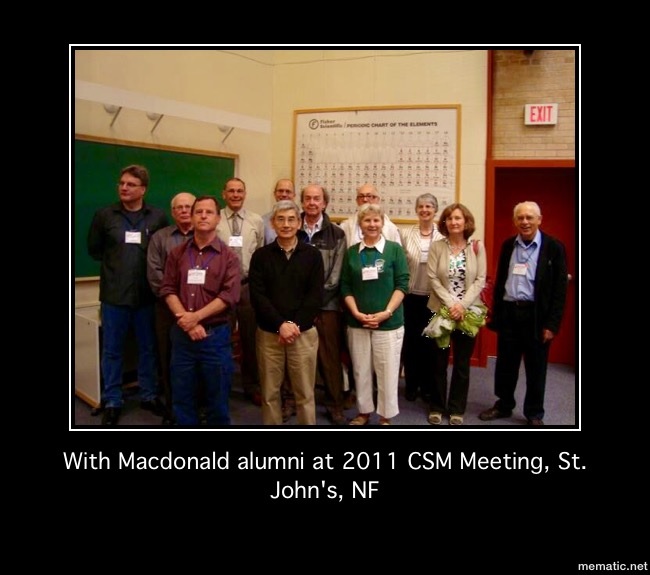 As a public servant at the Research Branch of Agriculture Canada in Ottawa, I had little direct communication or contact with the public, which was handled mainly by management made up of administrators who had various previous research experiences. Because of bureaucratic reasons, I was soon sent to take full-time French classes to fulfill the bilingual requirement (at the intermediate level) of the specific position. Luckily, I satisfied this requirement on passing the first exam in the shortest possible time. This, incidentally, also allowed time for the director to finance equipping my laboratory and assign a technologist to look after my lab in the Soils Section to study soil N dynamics concerning free-living N2-fixing or denitrifying bacteria in Pseudomas species, which were ubiquitous. A government scientist has professional (e.g. journal editorial roles, organizing and convening seminars and conferences for scientific societies) and administrative (e.g. chairing various committees such as that for the library, lab safety, facilities maintenance and sharing) responsibilities besides conducting research. Teaching and hosting research trainees, however, are optional and dependent on funding. External research funding and collaboration, especially from industry, are encouraged. For professional development, scientists can attend international conferences annually. Thus, I had opportunities of travelling to venues across Canada, the U.S. and Western Europe.
As a public servant at the Research Branch of Agriculture Canada in Ottawa, I had little direct communication or contact with the public, which was handled mainly by management made up of administrators who had various previous research experiences. Because of bureaucratic reasons, I was soon sent to take full-time French classes to fulfill the bilingual requirement (at the intermediate level) of the specific position. Luckily, I satisfied this requirement on passing the first exam in the shortest possible time. This, incidentally, also allowed time for the director to finance equipping my laboratory and assign a technologist to look after my lab in the Soils Section to study soil N dynamics concerning free-living N2-fixing or denitrifying bacteria in Pseudomas species, which were ubiquitous. A government scientist has professional (e.g. journal editorial roles, organizing and convening seminars and conferences for scientific societies) and administrative (e.g. chairing various committees such as that for the library, lab safety, facilities maintenance and sharing) responsibilities besides conducting research. Teaching and hosting research trainees, however, are optional and dependent on funding. External research funding and collaboration, especially from industry, are encouraged. For professional development, scientists can attend international conferences annually. Thus, I had opportunities of travelling to venues across Canada, the U.S. and Western Europe.
Morris Schnitzer headed the Soils Section. He was a Holocaust survivor and an expert in humid acid chemistry. Since the N2 Fixation Group also needed new blood, I moved to join this group of biochemists and geneticists, with whom I shared common interests, fostering more mutual understanding and collaboration. The leader of the N2 Fixation Program was Richard Miller, a biochemist and a graduate of the Massachusetts Institute of Technology, who had collaborations with John Postgate, director of the Nitrogen Fixation Laboratory in Sussex, U.K., that was largely engaged in enzyme mechanisms and physiology. At CEF, the target crop for N2 fixation research was alfalfa. (Alfalfa roots are nodulated by the fast-growing rhizobia, Sinorhizobium, while soybean is nodulated by the slow-growing rhizobia, Bradyrhizobium.). Broadly, we sought to better understand the alfalfa-Sinorhizobium symbiosis as an important plant-microbe interaction, which could offer insights to enhance or improve crop health and nutrition independent of fertilizer usage for sustainable agriculture.
Initially, I established a project to survey strains of S. meliloti (the fast-growing rhizobia) that could denitrify in the free-living state. The distribution (30-60%) of this trait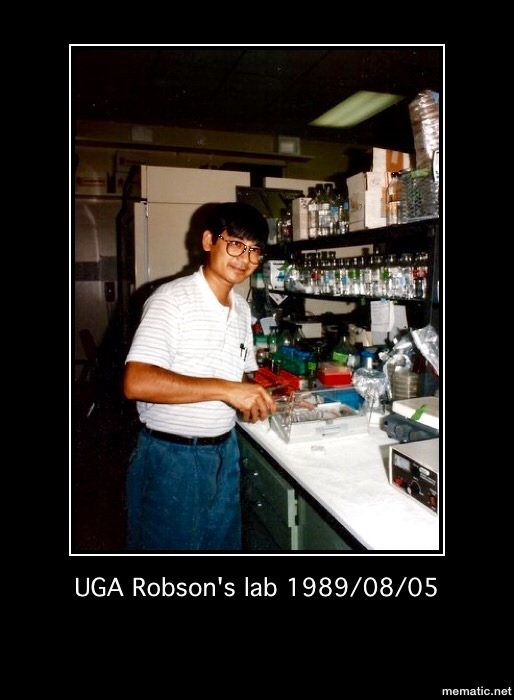 in the strains indicated its potential importance to their survival. However, I realized that the underlying factor had to be in their genetics and I had to get into this field in order to understand its basis. As I was eligible for a Sabbatical work transfer, I requested approval for leave to work at the University of Georgia (UGA) in Athens, GA.
in the strains indicated its potential importance to their survival. However, I realized that the underlying factor had to be in their genetics and I had to get into this field in order to understand its basis. As I was eligible for a Sabbatical work transfer, I requested approval for leave to work at the University of Georgia (UGA) in Athens, GA.
At that time, Rob Robson, a molecular geneticist and microbiologist from John Postgate’s group in Sussex recently moved to the Biochemistry Department of UGA. He co-
discovered alternative dinitrogenases in Azotobacter species containing vanadium (Va, instead of molybdenum, Mo) as the metal cofactor in addition to the Mo-enzyme. The Va-enzyme was found to be unique in reducing acetylene to ethane (instead of ethylene) as a physiological marker. The department had assembled several experts who specialized in metal enzyme mechanisms involved in energy metabolism such as that of dinitrogenases and hydrogenases. Hence, it was a golden opportunity for me to learn molecular genetics by joining Rob’s lab as a visiting research professor to search for alternative dinitrogenases in Gram-negative bacteria for my Sabbatical year. The project was completed in time with sufficient results for a publication.
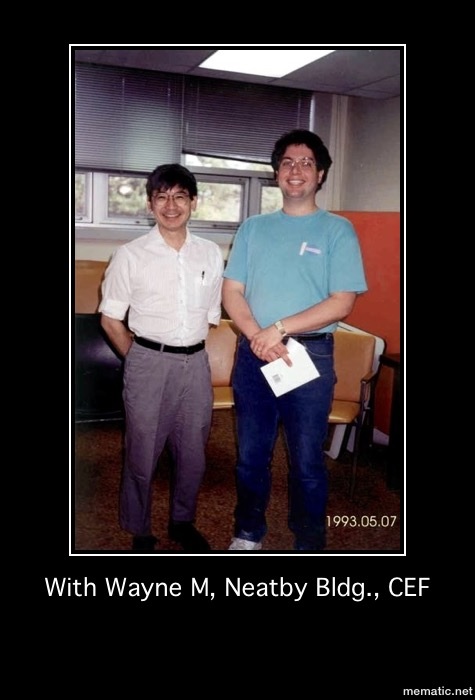 Re-orientation in Molecular Microbiology
Re-orientation in Molecular Microbiology
Upon my return to the Ottawa lab in the fall of 1989, I hired a new technologist (Wayne McCormick) with experience in molecular biology, and developed a project to look into denitrification genes in S. meliloti in collaboration with a couple of colleagues whose expertise was in bacterial genetics. The first target was to locate the N2O reductase structural gene, nosZ, by probing the bacterium’s genome.
Prior to my Sabbatical leave, in the winter of 1987, I received an invitation for a two-week visit from the director (Prof. Chongbiao You) of the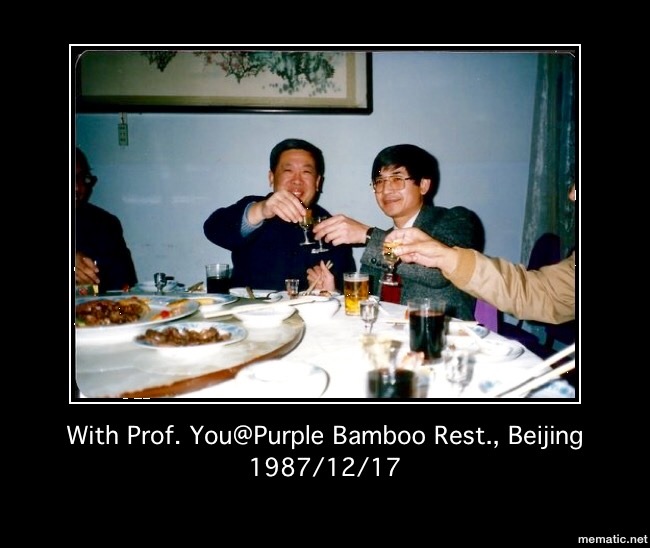 Institute for the Application of Atomic Energy, Chinese Academy of Agricultural Sciences (CAAS) in Beijing, as a technical advisor under the auspices of the United Nations Educational, Scientific and Cultural Organization. My wife, Helen, and I left for Beijing in early December. Prof. You was interested in detecting alternative dinitrogenases in an Alcaligenes species strain, an N2-fixing bacterium his group had isolated and identified from the rice rhizosphere. It was at a time that preceded China’s economic boom, when foreign exchange coupons were still used. They had modest facilities, although some visibly new equipment, and appeared to be overstaffed. The Chinese Agricultural University was close by, near the ruins of Yuan Ming Yuan. As part of my visit, I gave a research seminar in putonghua for the first time in my career at the university. The students’ pertinent questions showed that they understood the subject well.
Institute for the Application of Atomic Energy, Chinese Academy of Agricultural Sciences (CAAS) in Beijing, as a technical advisor under the auspices of the United Nations Educational, Scientific and Cultural Organization. My wife, Helen, and I left for Beijing in early December. Prof. You was interested in detecting alternative dinitrogenases in an Alcaligenes species strain, an N2-fixing bacterium his group had isolated and identified from the rice rhizosphere. It was at a time that preceded China’s economic boom, when foreign exchange coupons were still used. They had modest facilities, although some visibly new equipment, and appeared to be overstaffed. The Chinese Agricultural University was close by, near the ruins of Yuan Ming Yuan. As part of my visit, I gave a research seminar in putonghua for the first time in my career at the university. The students’ pertinent questions showed that they understood the subject well.
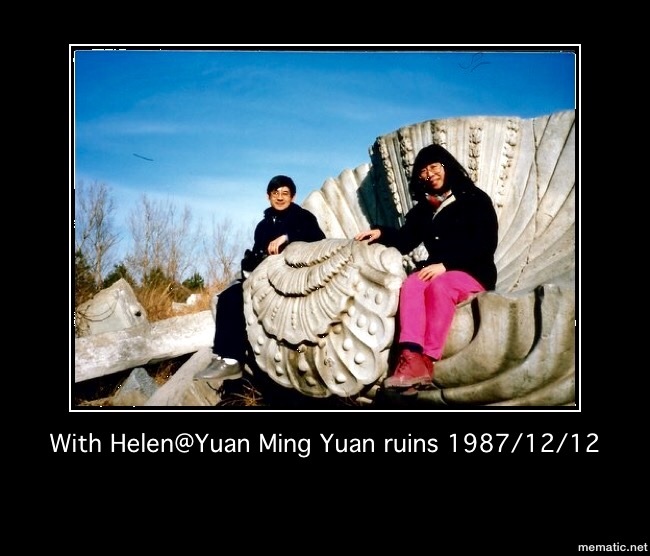 We were well received and entertained by the hosting institute. As a diversion, we were also sent on a flight to CAAS’s branch in Xi’an, where I gave another seminar as well as toured the First Emperor’s Terra Cotta assemblage for the first time. As the Cultural Revolution had wrapped up, China was opening to the world. However, China had lost a generation of scientists, whom she found in her diaspora.
We were well received and entertained by the hosting institute. As a diversion, we were also sent on a flight to CAAS’s branch in Xi’an, where I gave another seminar as well as toured the First Emperor’s Terra Cotta assemblage for the first time. As the Cultural Revolution had wrapped up, China was opening to the world. However, China had lost a generation of scientists, whom she found in her diaspora.
Unexpectedly, the first results of the nosZ project localized this structural gene (and likely all the denitrification genes) on one of the two megaplasmids, pSymA, of S. meliloti. It was surprising because pSymA also carried other genes, which were essential for nodulation and symbiotic N2 fixation with alfalfa, since N2 fixation was a seemingly antagonistic process of denitrification. Actually, there is no contradiction. N2 fixation is needed for assimilation when N source is unavailable, but it is not required when N is abundant, which inhibits nodulation. The significance of the finding was that these genes for N metabolism were mobilizable and conserved by plasmid transfer and integration. Previously, Bärbel Friedrich had localized denitrification genes on a small plasmid in a free-living bacterial species, Alcaligenes eutrophus.
We proceeded to investigate the organization and characterization of all the nos genes required for reducing N2O as the final step in the sequential nitrate reduction process to produce N2 as the final product. In the following decade, I extended the genetic sequence analysis to the nearby nir genes required for reducing nitrite. Nitrite reduction is the second and key step after nitrate reduction in denitrification because it catalyzes the formation of the first gaseous product nitric oxide (NO), the reduction of which forms N2O. Eventually, the linked nos and nir operons were mapped in detail by studying overlapping cosmids of S. meliloti. In the course of this work, useful plasmids were generated by construction or cloning, which were requested for by several foreign labs looking into denitrifying genetics in symbiotic or free-living N2 fixers.
Before the conclusion of this genetic research as the N2 Fixation Program at CEF was terminating for political reasons in the reorganization of the Research Branch, I had extended my work to look into bacterial control via antibiosis of Fusarium head blight, a worldwide fungal disease in cereals such as wheat and corn. This was a new mandate of agricultural research. Besides working out the mechanism of the antibiosis involved, field tests and plant-growth chamber experiments on corn were conducted to demonstrate its biological control efficiency. My previous cornfield and greenhouse experiences came in handy.
Both field and lab experiments, utilizing both physiological and molecular approaches, were applied. Advancing to my senior years, the final major project was to investigate the population response of soil archaea, which were involved in N metabolism (nitrification, the oxidation of ammonia to nitrite and nitrate), as affected by fertilizer application and crop rotation.
Archaea are single-cell organisms formerly classified as bacteria. Their classical representations are the methanogenic archaea commonly found in anaerobic environments such as the rumen of cattle and deep-sea hydrothermal vents. Soil archaea (taxonomically named Thaumarchaeota as an order under the Archaea domain), however, are largely unculturable entities that actively nitrify (or oxidize ammonia to nitrite and nitrate). The present understanding of the origin of Eukarya domain is an accidental endosymbiotic union of bacteria with archaea. Earlier, Lynn Margulis first proposed the endosymbiosis theory between single-cell organisms to form eukaryotic organisms (symbiogenesis) around 1.5 billion years ago. Further evolution of eukaryotes spawned diverse multicellular organisms and, eventually resulted in the proliferation of complex plants and animals.
Since it was very difficult to isolate or culture soil archaea, their distribution and population dynamics had to be monitored indirectly by molecular means, viz. cloning and quantitative polymerase-chain-reaction (qPCR) enumeration of their marker gene, the small subunit of ribosomal nucleic acid (16S rRNA). Both archaeal and bacterial populations as well as their nitrifying members were thus investigated during three growing seasons at two experimental sites. In conclusion, this work discovered opposite effects of organic and inorganic fertilizers on the soil archaea and bacterial populations, affecting the rate of nitrification. Crop types and rotation, however, exerted a much lesser effect. These results offered practical implications for the advantages and disadvantages of fertilizer applications, indicating the gain and loss of soil N that affect its availability to crops.
In retrospect, my career engaged me on a winding journey around nature’s N cycle in the biosphere. Even then, the inner workings of Mother Nature were only superficially exposed by environmental, physiological, biochemical or genetic approach.
Afterlife of a profession
Like a soldier who is fading away from the battlefield, he is due for re-integration into civilian life. He could have been a sniper taking keen shots at the unknown enemy to safeguard his fellow soldiers while applying curiosity to survey the environment. However, to take down obstacles to better understand nature is forever ongoing and needs updating by succeeding generations to soldier on.
The scientific method, in contrast to séance, is a reliable tool to obtain in-depth knowledge when observing physical phenomena, and recognizing misleading red herrings in the course of investigations. It demands objectivity, focus, unemotional pursuits and relevant imagination. To undertake careful research for public good is the best a researcher can aim to function. Formulating public policies based on scientific facts should also serve public good.
After my retirement the Research Branch was renamed Science and Technology Branch, signalling changes in the direction and emphasis of government research. It almost coincided with the defunding and transfer of all responsibilities of the government for operating the Experimental Lakes Area (ELA) to the International Institute for Sustainable Development to keep it open and functioning. John Shearer, a senior biologist and ELA operation manager, noted that up to 2012, 47 Ph.D. candidates completed dissertations and 80 master’s students completed theses, using research they participated in at ELA. I am proud to be one of them and still grateful to have had public support in my scientific training and development.
[Ottawa, 15 March 2015]

